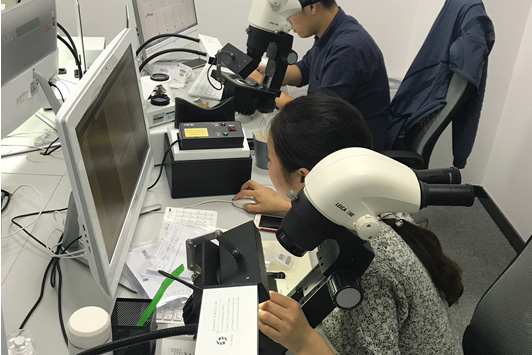
Colored gemstones are valued for their beauty, durability and rarity. But it takes some dressing up to get certain stones looking their best. While many natural colored gems come out of the earth in top form, others undergo enhancements to reach that level of appeal. Both types have a customer base: Treated stones are more affordable, while stones verified as “non-heat” or “untreated” will fetch top dollar.
“The most prevalent treatments of colored stones are diffusion, heat, fracture-filling, dyes and irradiation,” explains Russell Shor, senior analyst at the Gemological Institute of America (GIA) (see box).
When natural doesn’t cut it
Of course, some stones have no need of additional beautification, such as rhodolite garnet or the verdant tsavorite. Tourmaline, which offers the widest array of colors of any stone, also skips the treatment process. Peridot and many zircon varieties remain naturally gorgeous.
With other gems, though, treatment is so universal that buyers expect the stone to sport some type of enhancement. For example, ruby and sapphire — both varieties of the mineral corundum — are routinely heated to push their color, yet they still dominate the colored-stone niche. Fancy colored sapphires have become enormously popular, and the yellow and orange varieties often get a color boost through beryllium diffusion and heating. Fracture-filling of low-grade ruby has also permeated the retail landscape. Tanzanite, blue zircon and blue apatite take the heat in order to produce the desired tone.
Emeralds are a perennial favorite with gemstone collectors. However, their extraction from the earth depends on such concussive mining that they display internal fractures (called jardin) as a result of that process. The remedy for this is to fracture-fill with oils, sometimes green-hued, or with a resin filler.
“Treatments help overcome the under-supply of attractive gemstones, helping many mining operations to make stones more salable [that] otherwise would not be worth cutting and polishing,” explains Dr. Daniel Nyfeler, managing director at Gübelin Gem Lab. “Whenever treatment is applied to a gemstone, it is done to increase the value of the stone. Treatment helps to sell the stone for a higher price, because it looks better. But it’s less rare than a natural one of comparable appearance, and hence of lower value.”
Tools of the trade
Properly identifying treatment types requires increasingly sophisticated equipment. Which tool is best for the job depends on “the gem species or variety, and which particular treatment is suspected,” according to American Gemological Laboratories (AGL) president Christopher Smith.
“The most common tools are a microscope, various spectrometers like ultraviolet-visible-near infrared spectroscopy (UV-Vis-NIR), infrared spectroscopy (FTIR), Raman spectroscopy, photoluminescence spectroscopy (PL), laser-induced breakdown spectroscopy (LIBS), X-ray fluorescence spectroscopy (ED-XRF), laser ablation inductively coupled plasma spectroscopy (LA-ICP-MS) and others,” he says.
Raman spectroscopy, for instance, utilizes laser beams bounced off the surface of the gemstone. This produces data about the molecular vibrations within the stone, which can be used to identify any foreign inclusions and filling substances.
The industry’s gatekeepers
“Some of the most challenging detections are with rubies having undergone low-temperature treatments,” says Dr. Adolf Peretti, president of GRS Swisslab. “They are treated to ever-lower temperatures, down to 350 degrees Celsius, which is also very close to temperatures reached during cutting.” That means it can be hard to tell whether such rubies have been deliberately treated, or whether the heat from the cutting process caused unintentional enhancements.
“Consumer protection is a very high priority today,” Peretti says. “When it is difficult to detect a treatment or when there are unresolved ethical questions — [such as] when not to call a gemstone treated — then the market reacts very nervously. In the long run, the questions are normally resolved; in the short run, panic can be reflected in the market.”
Nyfeler points to laboratories as the gatekeepers. “Since today’s gemstone supply chain has no such thing as proper transparency, gem labs are entrusted with the duty of determining if a gemstone is treated or not.”
The key consideration with all treated stones is disclosure, he stresses. “There is nothing bad about treating gemstones, as long as it is declared.”
Image: Guild Laboratories in Shenzhen, China.Article from the Rapaport Magazine - March 2018. To subscribe click here.